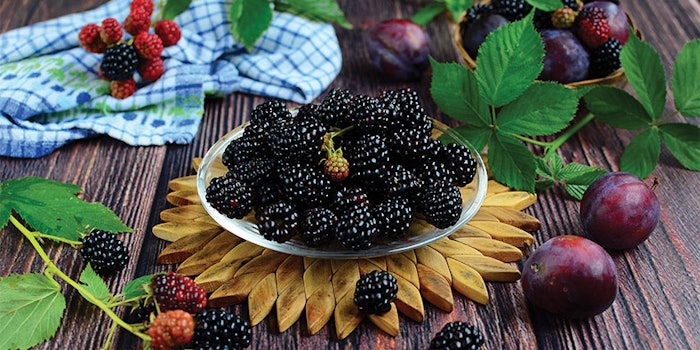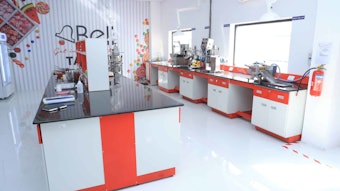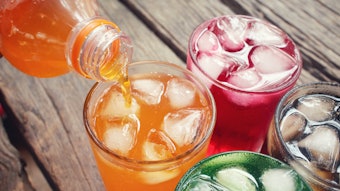
If α-ionone is, in many instances, favored by flavorists, there is no doubt that β-ionone (FEMA# 2595, CAS# 14901-07-6) is distinctly favored by nature. The profile is softer and, in my opinion, allows for slightly higher levels of use.
I stubbornly still think I see a minor cedary note, but science would seem to have proven me wrong. In any case, there are really very few flavor categories where that poses a problem and many where it might be an advantage.
Note that the dose rates given throughout this article are the levels suggested for use in flavors intended to be dosed at 0.05% in ready-to-drink beverages or in a simple bouillon.
Berry Flavors
Blackberry: Either ionone can be used in blackberry flavors, but, because of the strong musk note inherent in blackberry flavors, β-ionone gives a more balanced profile than α-ionone. An ideal level of addition is around 600 ppm.
Blackcurrant: β-Ionone is also very useful in all types of blackcurrant flavors. One hundred ppm is a typical starting point.
Blueberry: The floral note in blueberry flavors is enhanced by around 80 ppm of this raw material.
Cranberry: Only fresh cranberry flavors derive significant benefit from this ingredient. Twenty ppm is a good level of addition. Dried cranberry flavors can use β-ionone, but it is much less effective.
For the full article, please check out Perfumer & Flavorist's January 2021 issue.










